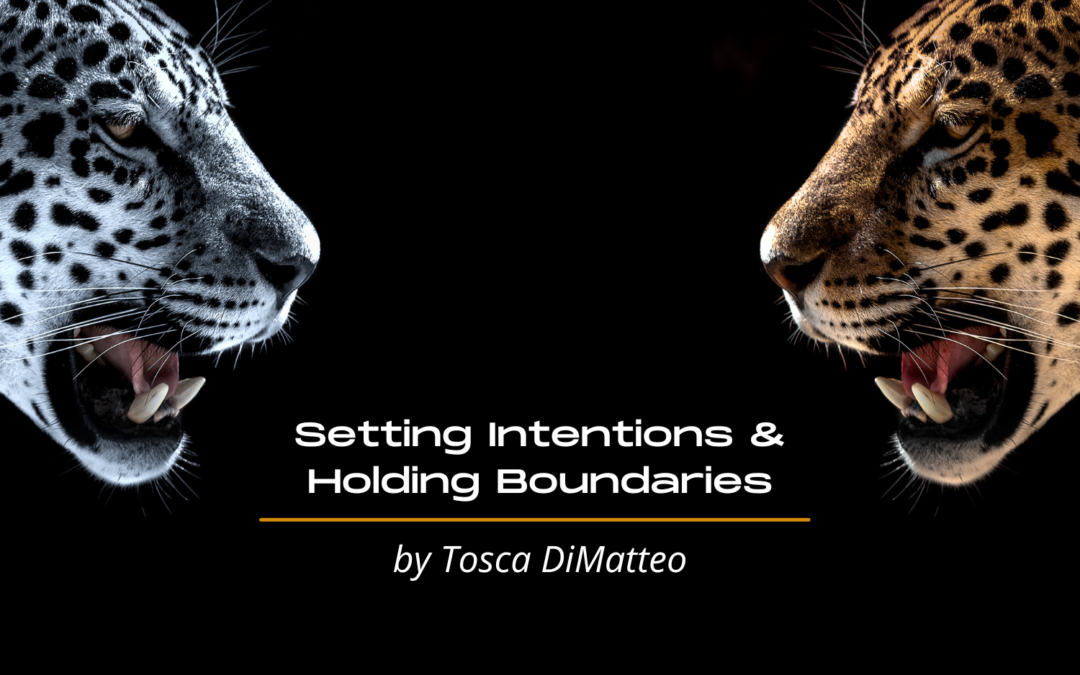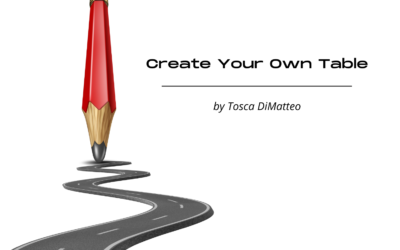For me, setting intentions goes hand in hand with holding boundaries. I’ll dive into both of these components to help you be who you want to be, access more energy and reach your goals!
How To Set Intentions
This may seem like a no brainer – but there is so much to gain by thinking a bit deeper about what you want for yourself. Intentions don’t have to be about just output, productivity or even having a specific roadmap to get to that destination you have defined for yourself. Intentions can also be used to create an expansive view of your desires – so if you aren’t exactly sure what you want things to look like, that’s not a bad thing – in fact it might even be to your advantage.
What I mean by this is sometimes we get caught up in feeling like we need to know what our destination looks like – when in reality, what can be even more helpful is taking a step back in how you want to experience the journey of getting there. This is actually so much of the work I do with my clients who feel stuck in their career – they have often lost sight not only of what they desire, but what they desire in the process of getting there. If this resonates with you, by all means, reach out to see if I can be your guide in that process.
As it relates to this journey I’m talking about, let’s take my business for example – while I may not have this perfect vision of what I want things to look like in 5 years, I do know that in the process of getting there I want to experience collaboration, excitement in my work and opportunities to do different kinds of work. These intentions can help me in the day-to-day choices of what I focus on and I know that these micro decisions will lead me to a place that I will be in alignment with.
Here are some prodding questions to identify a clear intention…
- How do you want to feel?
- What do you want to experiment with?
- What do you want to complete / get done?
- Who do you want to spend your time with?
- What do you want to decondition from?
- What patterns do you want to shift or let go of?
Another way to find clarity on intentions is to think about how you want to measure success of that intention. To bring this to life, I’ll share one of my intentions for this summer, which is to find people that I really vibe and connect with. Some of the ways I will measure this is by asking myself these questions:
- How much time in week did I devote to making new connections?
- What did I experiment with?
- What new pathways did I explore to meet new people?
- What did I say no to, so that I could say yes to what really excited me?
A big part of setting intentions – especially the scary ones – is to also identify what boundaries you may need to set in order to make the time and space for those new intentions. Even if you set an intention like ‘be more patient’ – setting yourself up for this type of goal may mean giving yourself more time and space to meditate or be in a contemplative / reflective mode.
What Are Boundaries?
For some of you, this may seem like a silly question to pose, but for others you may not have had good examples in your life for what good boundaries are. This can happen if you grow up in a household that operates in extremes. For example, if you grew up with a mother that overshared before you were emotionally mature enough to process things – you may not know how much information is too much or inappropriate to share in a variety of situations. Alternatively, if you lived in a house with a parent figure that kept their life extremely private, you may think it’s not appropriate to open up to anyone about personal matters. And if you grew up in a home with both of those situations at the same time – well then you may be utterly confused.
Boundaries have been talked about a lot in these recent years, but I’m not sure we dive as deep as we need to really uproot our habits that are preventing us from truly having healthy boundaries. Whether we are talking about family, friends, our workplace or what we consume (ranging from media to food) we live in a world that tends not to honor boundaries, truth be told.
Boundaries are those parameters that you put in place to honor what you need, when you need it. You can set boundaries with yourself, and with others as it relates to time and energy and also what you allow in and even internalized. Sometimes we set boundaries well in advance – such as blocking off our calendar during lunch time so no meetings can be booked – and sometimes we decide in the moment that we have a need to change the dynamic of what is taking place. For example, sometimes I get into a conversation with my husband that I am just not mentally or emotionally ready for and right in the middle of it I have to say – I do not want to have this conversation at this time. And you know what? That is absolutely my right – as it is yours!
I’m excited just talking about boundaries because I know that the result of doing so means that you’re taking your power back. That’s right, when we don’t honor the boundaries we truly need to be our best selves, in essence what we’re doing is giving our power away. And in the most extreme of situations, when we do that, we are abandoning ourselves. Are you shaking your head? Ok then, read on and let’s talk more about setting boundaries.
How To Set Boundaries
Step 1: Identify your needs, based on your intentions
It may sound surprising but identifying your needs may not come as easily as you would think – and please know that you are not alone on that my friend. Identifying your needs may require some real time for reflection. So often, we know what we don’t want – but struggle to articulate and translate that into what our needs are. And that’s ok – we can also work backwards!
One of my own examples of having to identify my own needs is at the start of a new job, when my intention was to totally shift my mindset and behavior away from proving that I was worthy of getting that job. In the past this ‘proving’ behavior looked like staying late at work and being overly responsive to emails to my own mental health detriment. What I realized is that I needed other activities in my life that aligned with what I cared about and what I was interested in so that my work didn’t become the only focus or the only way I felt my value in this world.
So, give some real thought to your needs and dig deep even if those needs bring up uncomfortable feelings or judgement.
Step 2: Determine what these needs look like in terms of boundaries
Often, though not always, needs can be linked to boundaries that either need to be fortified or created – especially when our intentions involve fitting in time for something that we currently aren’t doing. If you’re looking to find time for your summer intention, then you may need to take stock of where you are spending time that is not contributing to this.
Often times holding boundaries with others means you are retraining them how to treat you.
To continue with my example about not being in ‘proving’ energy and action, I set a boundary with how late I would stay at work from day one, to avoid falling into old traps. To help me stay accountable to this, I scheduled commitments with other people that forced me to leave the office at my designated time. As a leader in my organization, it also allowed me to model the behavior I was encouraging, and that went a long way to building trust.
Some other examples of what boundaries might look like is:
- Delaying answering emails when you are in a healthy emotional state
- Limiting time with the ‘energy vampires’ in your life
- Refusing to engage in gossip
- Saying NO to anything that is a ‘should’ and not an ‘I want to’
There may be a voice in your head telling you some things are not possible – but I want to push back on that to say to you that you have more power than you may be giving yourself credit for. Try small moves with your boundaries, keep pushing that and see what happens – and please let me know, I would love to hear about your experience!
Now comes the point where you decide if you need to enlist / inform others in the boundary you are setting.
Step 3: Identify your action plan
There are really two ways to handle changes in behavior that you plan on making. You either shift your behaviors in that moment and deal with what happens in that moment (if needed) OR you enlist others in the changes you are making to your boundaries. The best approach is very much based on the particular situation – but the answer will always be found in understanding what’s in your best interest.
I think people underestimate the power of not asking for permission in this regard. The power of simply taking the new action that is aligned with your boundary enables you to understand if others will be impacted in the way that you worst fear. Sometimes we build stories in our head that have been there for years and don’t realize that the changes we want to make might not be met with the resistance we are most afraid of.
Remember to take it slow if that is going to be the strategy that will enable you to take your power back inch by inch. Resetting the boundary can be done in stages – so consider what feels like a stretch for you, but that won’t put you into extreme stress!
There have been many situations in my own life where I had to experiment with boundaries. For example learning how many days I am comfortable vacationing with certain friends, or learning how long I can allow myself to be on the phone with a person that only takes and takes.
Setting the boundary is one thing, but holding the line when you encounter resistance (either with yourself or others) is where the rubber really meets the road.
Step 4: Hold the line
When you start to hold firm boundaries, it is often uncomfortable for the person / people impacted, because they are likely the ones that have been gaining from the lack of boundary. So, whether or not you made a big announcement about it, they will likely feel the boundary being moved and push back in some kind of way. This might sound something like “oh, I just need five more minutes” or even “why don’t you care about me anymore”.
The key here is to be firm. Don’t walk it back. Don’t make the exception just this ONE TIME. This my friends is where the real work is. In that moment when your friend is getting into act three of their current drama, or that moment where you’re receiving pressure from your coworker to create two more slides for the deck. Here’s the thing, just like a teenager figuring out how far they can push the rules, these people in your life – whether they realized it or not – are testing the boundary you are putting in place. They are wondering if you are TRULY going to say no because they have ALWAYS been able to get you to say yes to that one extra thing.
Yes, this is uncomfortable and it’s probably not gonna feel good in the moment. But when you hold the line and you protect your time, energy and emotional capacity you WILL start to see your life change. And you will start to see how those intentions you set become realities.
Step 5: Adjust boundaries as needed
You may realize that you need to play with your boundary setting until you are getting what you need. What’s critical is to really evaluate and assess what’s truly working for you – and be honest about it. There’s a difference between feeling good in the SHORT TERM, because you relieved the temporary pain of saying no to someone, and the LONG TERM gain of the chronic over-giving. Please, read that last sentence one more time…
Step 6: Celebrate every inch gained
As I’ve mentioned, setting and holding boundaries is super uncomfortable – especially for those who have never experimented with these kinds of changes. So, it’s important to take the time to honor the hard work you’re doing with every small win. This celebration and reward process helps to encourage you to continue doing the work and it helps you to see the ground you are gaining over the long term.
Step 7: Winning back your energy
I’m super excited for you to give this a try. Time seems to go by in the blink of an eye – so being mindful about what you want to get out of the moments you have will make a huge difference with how you feel in the present moment as well as the distant future.
Setting intentions and holding boundaries is a process you can use over and over again to truly live your life for YOU. When you practice with small things – it helps you big the muscles for big things. So, if saying “no” to the project your boss wants to offload on you feels to big and scary right now, start with something that feels more manageable – and that might mean saying no to hanging out with your friend on a Friday so that you have time to fit in that creative project that’s part of your bigger life intention.
Whatever you do, don’t be hard on yourself in this process. If you let the boundary slip, go at it again the next time. There is a learning curve to all of it – but just remember to keep your eye on the prize – which is breaking the patterns that are no longer serving you.
If you want support with holding boundaries, schedule an exploratory call here.






Recent Comments